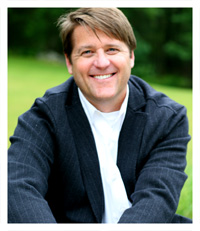
Last week I introduced my new keynote speech, Think Like A CMO as the brazen answer to the question: What’s the secret to success? My rationale starts with the extreme yet somewhat familiar sounding challenges that most CMOs (and the rest of us) face:
- Bosses that may have unrealistic or significantly different expectations;
- Numerous factors that impact results that are outside of one’s control;
- Limited time-frame to achieve successful outcomes.
To overcome these obstacles, I then present successful CMOs as cool CATS (Courageous, Artful, Thoughtful, Scientific), an acronym that offers guidance for just about anyone looking to accomplish anything. Happily, the speech was well received. What also makes me happy is that the interview below with Anthony Christie, CMO at Level 3 Communications, adds more evidence to my growing stockpile. Christie, winner of The CMO Club‘s Officer Award, is indeed one of the cool CATS:
- Courageous: Shifted the responsibility for customer experience into the global marketing department;
- Artful: Developed CMO-CIO-CTO triumvirate to tackle cross-functional challenges;
- Thoughtful: Launched a new branding initiative internally first, an effort that insured employee pride and commitment;
- Scientific: Implemented a variety of metrics including brand tracking and sales performance.
And like his successful peers, as you will soon learn, for these CATS, there’s no time for preening.
Drew: Looking back over the last 12-24 months, what initiative under your leadership really worked well?
In Q4 of 2014, Level 3 completed the acquisition of tw telecom. My team was directly involved in leading the integration process from end-to-end. First the product management and development teams that I oversee have led the process of rationalizing our product portfolio and continued work to move to single instances of our products and solutions around the globe. Additionally, our marketing strategy, pricing and communications teams have been responsible for integrating targeting strategies, pricing approaches, voice of the customer activation as well as all internal and external communications related to bringing two companies together as one. A year into the integration process, the company has achieved our major milestones and are meeting stakeholder expectations.
Drew: I watched your recent corporate video and one of the lines that struck me was “you may not have heard of us but many companies have.” How important is it to your long term plans to have broader awareness of Level 3? If it is, how do you go about building this awareness while still driving leads efficiently into your pipeline?
We have a very surgical approach to targeting enterprises in our addressable market. Our business is B to B only and focused on wireline services to enterprise and wholesale unlike some of our competitors who play in the consumer wireless space. So, it’s not necessary for us to have broad awareness in the general marketplace. However, we are focused on simultaneously building awareness and filling our funnel through a mix of thought leadership, events, social media and hyper-targeted efforts that drive inbound activity and qualified outbound activity. And we have evidence through our brand tracker and campaign results that this approach is working.
Drew: Effecting change beyond the marketing department is not easy and is often met with resistance from other departments. How did you make this happen? Looking back, what do you wish you knew a year ago that you learned “the hard way”?
It’s critical to understand the needs across the enterprise and to look at change efforts from your cross-functional stakeholder’s point of view. In our case, we look at the functions of the CMO, CTO and CIO as a three-legged stool that relies upon each other to move the business forward. This relationship has become a deliberate part of our operating model. Separately, we learned the “hard way” that affecting change in improving the customer experience could not happen in a silo within one functional area of the business. We resolved this by moving responsibility for global customer experience out of the business process function and into the global marketing function as we believe that customer experience is intrinsically tied to brand and a comprehensive view of the customer journey.
Drew: Did any of your marketing initiatives involve employee activation? If so, can you describe what you did and how it worked? How did you get employees to care?
When we relaunched our brand, we actually built the foundation through the lens of our employee base first then evaluated it to ensure that it was also compelling for our customers and prospects. We also deliberately launched the brand internally before launching it externally. We built various programs and communications to engage our employees. These included a fun and interactive e-book, use of our employees in our branded materials including videos and posters, and ongoing communications and brand immersion training. These efforts helped to instill a sense of pride and to give them context for how important each and every one of their jobs are to “Own It” and be accountable to their contributions to the company with the end goal of enabling our customers’ business success.
Drew: When advising members of your team on cross-departmental initiatives, what do tell them to do and not do to ensure success?
First and foremost, I advised them to approach these initiatives as though they were the CEO of their business. That inherently assumes cross-functional leadership and engagement. A CEO by definition cannot do the job on their own. It requires understanding and respect for cross-functional expertise. At the same time, the leader of any cross-functional initiative needs to gather stakeholder input and work toward a collaborative solution. And to remember that collaboration does not equal consensus. At some point in the process, the best decision for the business needs to be reached and implemented.
Drew: Looking ahead, what is the single biggest challenge that you’d like to overcome?
The biggest challenge I’d like to overcome to is to accelerate the alignment of my team with our partners in sales and operations to grow our business faster than the broader market and do that on a global scale.




